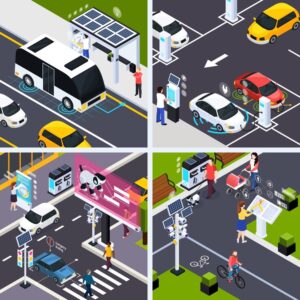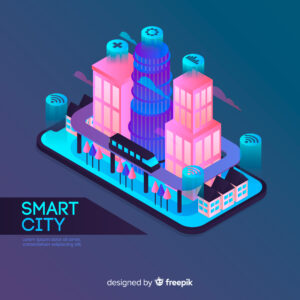The Impact of CO₂ Emissions in Cities
Cities are responsible for over 70% of global CO₂ emissions, with the transportation sector playing a key role in air pollution. Vehicle traffic, congestion, and the lack of efficient parking solutions significantly contribute to the increase in emissions.
How Smart Mobility Helps Reduce Emissions
Smart mobility technologies are transforming urban transportation, reducing traffic, and optimizing resource use. Here are some of the most effective solutions:
1. Smart Parking and Traffic Reduction
Smart parking reduces the need to drive around looking for a spot, cutting down up to 30% of urban traffic and CO₂ emissions. Learn more about our smart parking solution.
Discover more about how Mobipar’s smart parking solutions are revolutionizing urban mobility.
2. Shared and Electric Mobility
The rise of car sharing, bike sharing, and electric scooters helps reduce dependence on private vehicles, significantly lowering emissions. According to a report by the International Transport Forum, shared mobility could reduce emissions by 50% over the next 20 years.
3. AI-Enhanced Public Transportation
Artificial intelligence (AI) optimizes public transport routes, reducing waiting times and encouraging people to use buses and trains instead of private cars. This not only improves transportation efficiency but also significantly reduces air pollution.
4. Big Data Analysis for Sustainable Mobility
The use of big data and IoT allows cities to analyze traffic flows and implement strategies to improve sustainability and reduce emissions. These data help identify critical areas, develop tailored solutions, and track improvements over time.
Case Studies: Smart Mobility in Action
Oslo: A Model for Sustainable Mobility
The Norwegian capital has implemented a strategy to cut emissions by 50% by 2020 and 95% by 2030. Measures include a 20% reduction in car traffic, the elimination of fossil fuel use for public transport, and incentives for electric vehicles. Source.
Stavanger: AI to Reduce Emissions
As part of the AI4Cities program, Stavanger implemented AVENUE, an AI-based system that predicts shared mobility demand and its related CO₂ reductions. This tool helps optimize traffic and promote sustainable transport solutions. Source.
Los Angeles: The Impact of Light Rail on Emissions
A study analyzed the effects of a new light rail line on reducing CO₂ emissions. The results showed a significant decline in emissions for households living close to the new stations, proving the effectiveness of public transportation in fighting pollution. Source.
Conclusion: The Future of Urban Mobility
The adoption of smart mobility & CO₂ is not just an environmental necessity but also an opportunity to enhance urban life quality. Through innovative and sustainable solutions, we can significantly cut CO₂ emissions and create more livable cities.
Cities investing in these technologies are already seeing concrete results: reduced traffic, more green spaces, and cleaner air.
The transition to smart mobility involves not just governments and institutions but also businesses and citizens. Everyone can contribute by adopting greener transportation options, reducing private car use, and supporting initiatives that promote efficient and less polluting transit systems.
Investing in smart mobility & CO₂ means building a better future with safer, cleaner, and more efficient cities. Every small action counts in achieving this goal and ensuring a positive impact on the planet.
Moreover, companies and startups play a crucial role in driving the change. By developing innovative solutions such as smart parking, AI-powered traffic management, and electric vehicle infrastructure, they contribute to shaping a more sustainable future. Policies and incentives from governments can further accelerate the transition by encouraging investment in green mobility technologies.
Public awareness and education are also key elements in this transformation. Citizens must be informed about the benefits of sustainable mobility and be encouraged to adopt new habits that reduce their carbon footprint. Cities that prioritize smart mobility will not only improve the environment but also enhance their economic growth and overall livability.
The road to sustainable urban mobility is a collective effort. By embracing smart mobility solutions today, we are paving the way for a cleaner, healthier, and more efficient tomorrow.
Want to learn how Mobipar can help your city reduce emissions? Contact us for a personalized consultation!


